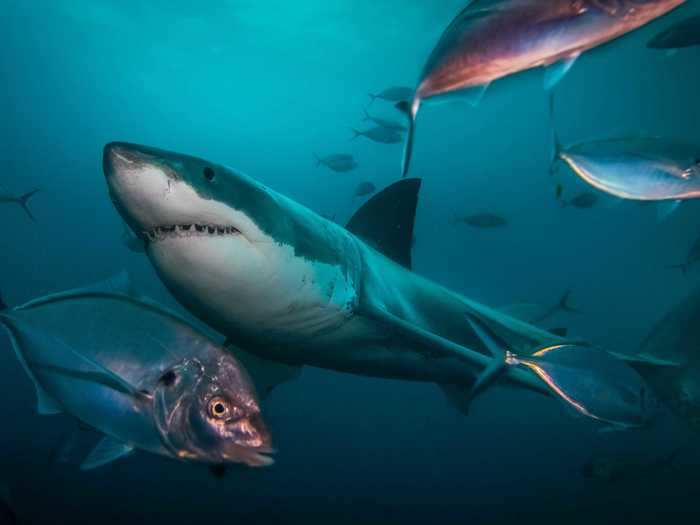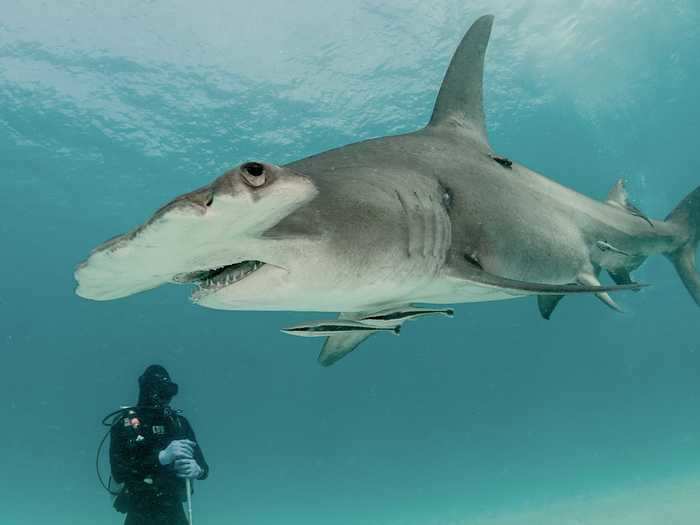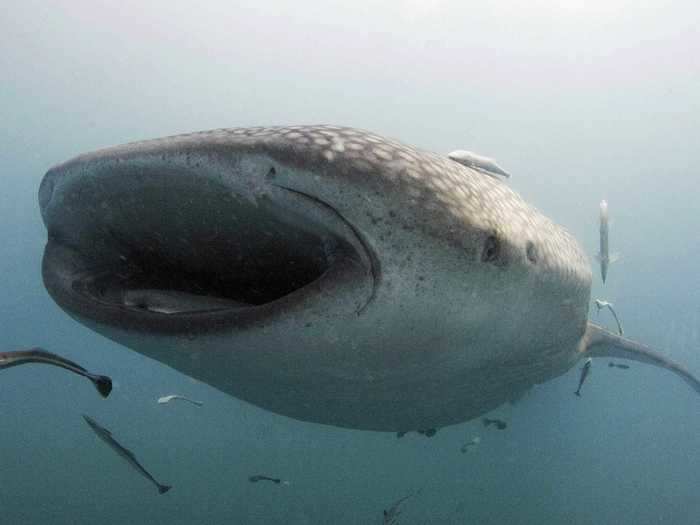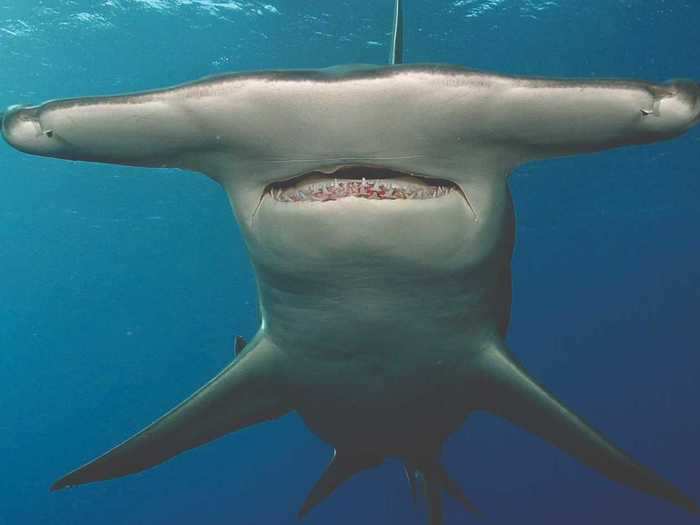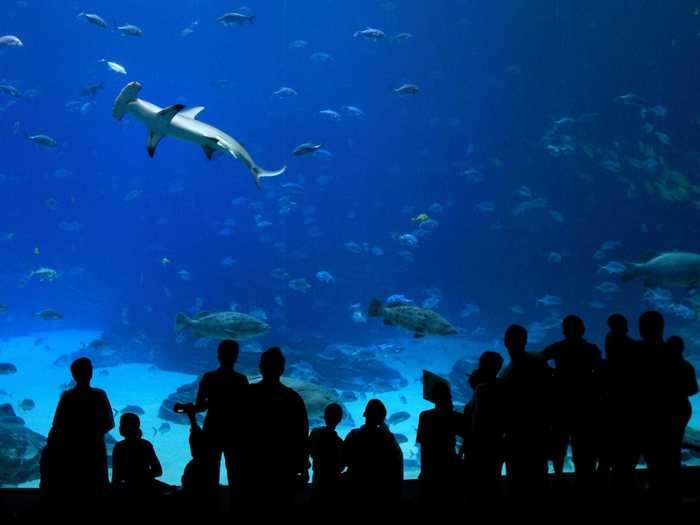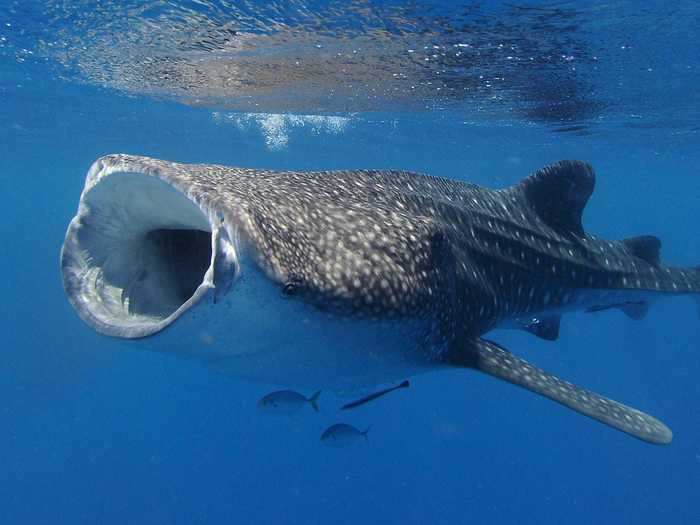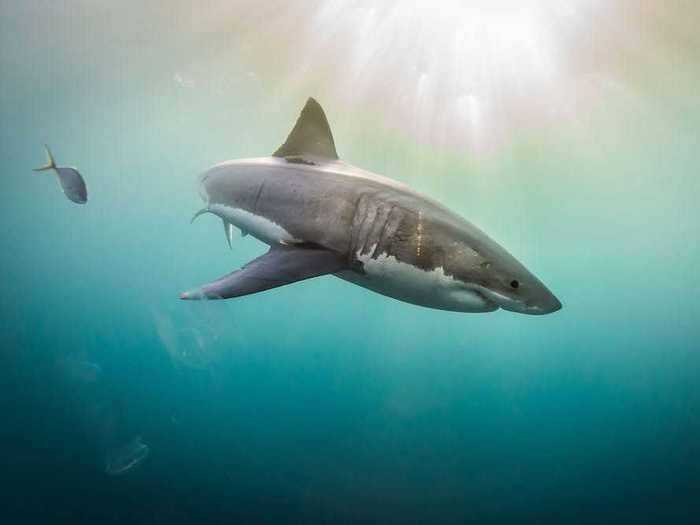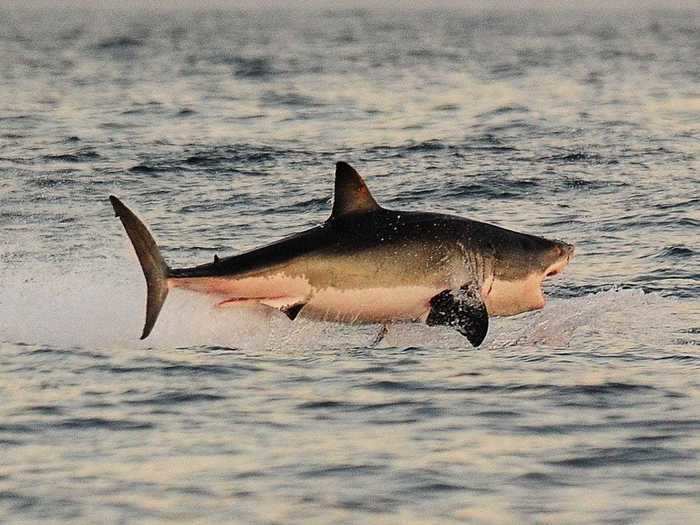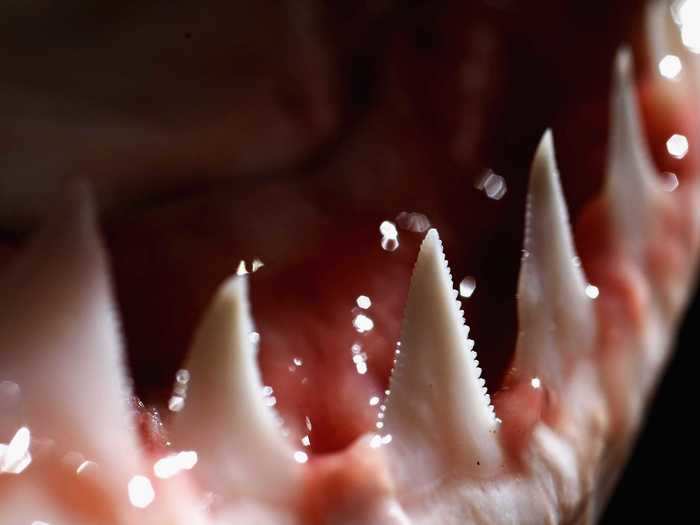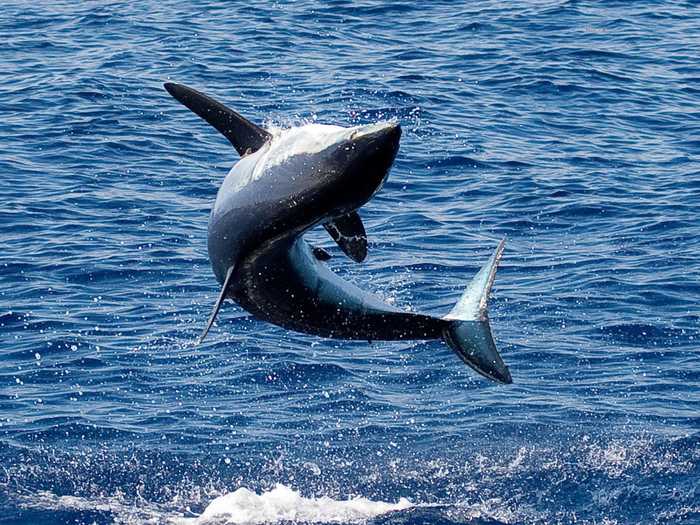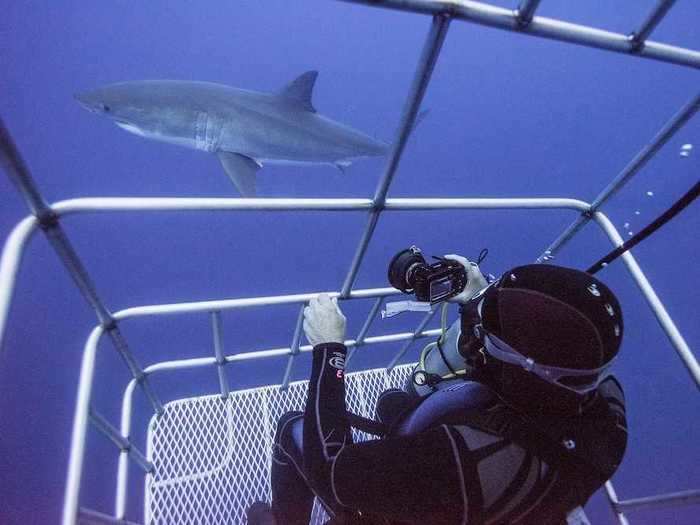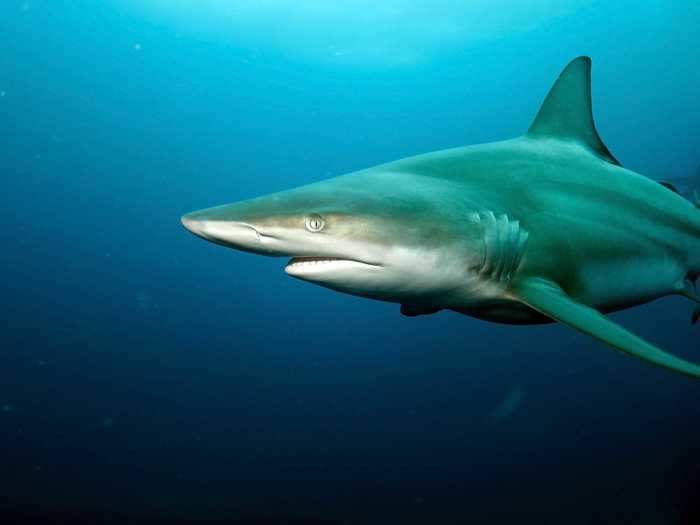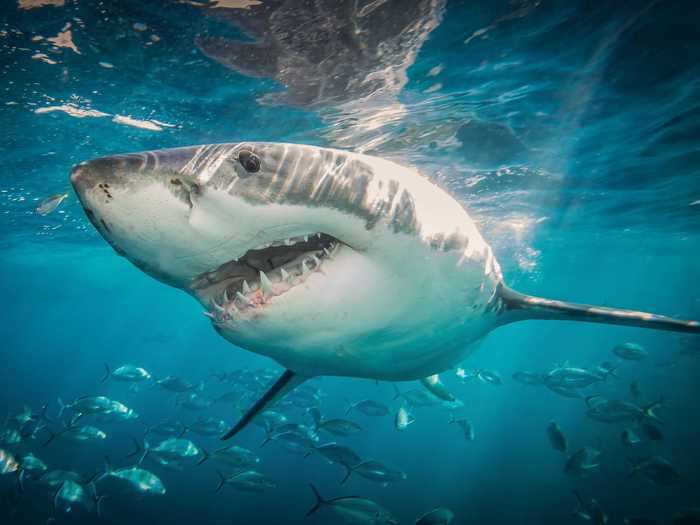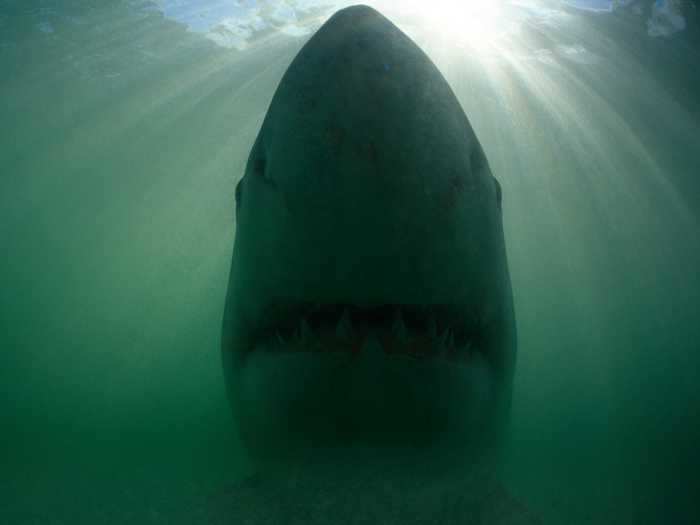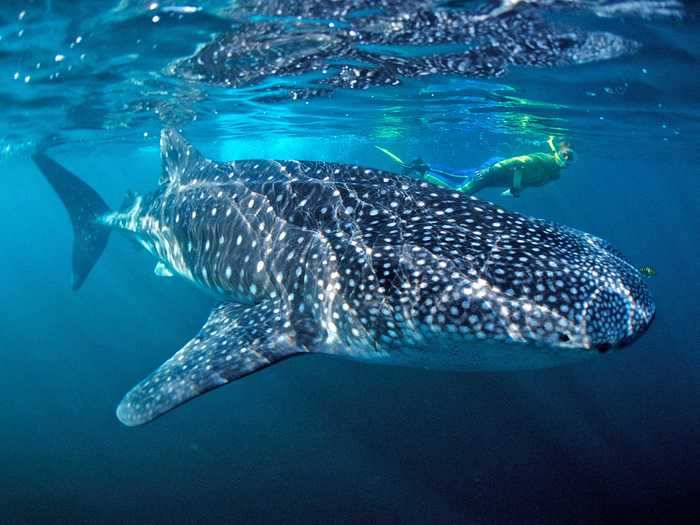A shark.RAFA RIVAS/AFP/Getty Images
- July 14 is Shark Awareness Day.
- Sharks are some of the most beautiful creatures in the ocean, but due to overfishing and other factors, many species are in danger.
- An estimated 100 million sharks are killed every year.
While people around the planet celebrate Shark Week, watch movie classics like "Jaws," and visit aquariums, many don't actually know much about sharks.
To celebrate Shark Awareness Day on July 14, Insider found 16 incredible photos of sharks, along with some interesting facts about these majestic creatures.
Keep scrolling to learn more about sharks.
Sharks, in some form or another, have been around for 450 million years.
A great white shark.
Barcroft Media/Getty Images
There are over 500 species of shark.
A sand tiger shark.
RAFA RIVAS/AFP/Getty Images
Sharks do not have bones.
A hammerhead shark looms close to the camera.
Frogfish Photography/Barcroft/Getty Images
The whale shark is the largest fish in the ocean.
A whale shark.
SCOTT TUASON/AFP/Getty Images
Another shark species is the hammerhead shark, known for its distinct appearance.
A hammerhead shark.
Jim Abernethy/Barcroft Media/Getty Images
In actuality, there are nine different hammerhead species. Some can be quite large, up to 18 feet, while the smallest species can be just 3 feet long.
The hammerhead's distinctly hammer-shaped head provides them with a hunting advantage and better depth perception.
Hammerhead sharks sometimes like to swim in schools.
People look at a hammerhead shark while visiting the Georgia Aquarium.
Streeter Lecka/Getty Images
Sharks tend to be solitary creatures, but scalloped hammerheads like to be around friends and family! The younger hammerheads likely stay together for protection, but it's unclear why full-grown sharks would stick together.
The schools that consist of all adult sharks go their separate ways at night, but reconvene during the day.
Another species of shark, the whale shark, is known for its giant mouth and distinct markings.
A whale shark.
James D. Morgan/Contributor/Getty Images
Great white sharks are the largest predatory fish on the planet.
A great white shark in South Australia.
Brad Leue / Barcroft Media via Getty Images / Barcroft Media via Getty Images
The largest great white ever recorded, Deep Blue, weighs in at a staggering 2 tons, or 4,000 pounds.
Great whites are named for their white underbellies.
A great white shark jumps out of the water.
CARL DE SOUZA/AFP/Getty Images
Great white sharks have 300 razor sharp teeth in their jaws.
The teeth and jaw of a great white shark.
Ian Waldie/Getty Images
Another species, the mako shark, is known to leap 20 feet out of the water.
A mako shark off the coast of Florida.
Ronald C. Modra/Getty Images
While some people are content to see sharks from behind the glass at an aquarium, other thrill-seekers take it to the next level and dive inside a cage to see a shark up close.
Cage diving in Mexico.
Dave J Hogan/Getty Images
While some question cage diving and its implications on sharks and feeding habits, others say it's helped spark a conversation about conservation.
"Divers in shark cages doing eco-tourism around the world has done some good. When I started diving with sharks decades ago, no one was interested in seeing sharks. Now there are shark ambassadors around the world. They've done some good things in trying to change the view most people have that sharks are dangerous," underwater photographer and shark diving expert Brian Skerry told National Geographic.
Shark embryos attack each other.
A blacktip shark.
Chris Alleaume/Shutterstock
For sharks, survival of the fittest begins before birth. According to Live Science, shark litter-mates all compete until the largest embryo eats all but one of their siblings.
A great white shark's bite packs a punch of almost 4,000 pounds per square inch ...
A great white shark in South Australia.
Barcroft Media/Getty Images
... but you're more likely to get killed by a champagne cork, a sand hole collapse, or fireworks than by a shark.
A shark.
Education Images/Universal Images Group/Getty Images
We should let sharks be — most of the time, they are peaceful inhabitants of the ocean, and we need to share it with them.
A female snorkeler and a whale shark.
Reinhard Dirscherl/ullstein bild/Getty Images

